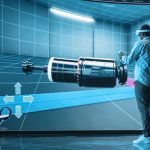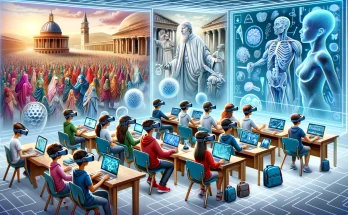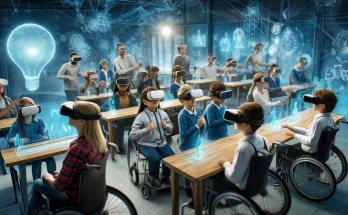Virtual Reality (VR) technology is reshaping the landscape of professional development across multiple industries. From healthcare and aviation to manufacturing, VR training simulators are proving to be invaluable tools for enhancing skills, reducing costs, and bolstering safety. This immersive technology provides professionals with the hands-on experience they need without the risks associated with real-life scenarios. This article explores the transformative impact of VR training simulators, highlighting sector-specific applications, cost-effectiveness, real-world case studies, and the future trends that could redefine professional training programs.
Sector-Specific Applications of VR Training
Healthcare: In the healthcare industry, VR is used to train surgeons and medical students in complex procedures without the need for live patients. This not only mitigates the risk of errors but also allows repeated practice sessions. For instance, VR simulations help surgeons master intricate techniques for surgeries like laparoscopies or cardiovascular procedures under a controlled environment that can be manipulated to mimic various complications.
Aviation: Pilots benefit significantly from VR simulators, which are used extensively for flight training and emergency preparedness. These simulators offer a realistic cockpit environment and weather scenarios, from clear skies to thunderstorms, to test pilots’ responses without leaving the ground. This type of training is crucial not only for enhancing the skills of experienced pilots but also for acclimating new pilots to the high-stakes environment of aviation.
Manufacturing: In manufacturing, VR training helps workers learn complex machinery operation in a safe, controlled setting. It reduces the risk of accidents associated with training on actual heavy equipment. For example, automotive manufacturers use VR to simulate assembly line tasks, allowing workers to gain familiarity with equipment and processes before engaging with real, potentially dangerous machinery.
Cost-Effectiveness and Safety
The economic benefits of VR training simulators are significant. By integrating VR, companies can cut down on the high costs associated with traditional training methods like physical mock-ups, travel for on-site training, and hiring instructors. Moreover, VR reduces the wear and tear on expensive equipment typically used during training sessions.
Safety is another critical advantage. VR allows trainees to experience dangerous or emergency situations in a zero-risk environment. This exposure prepares them to handle real-world scenarios more effectively and confidently, potentially reducing workplace accidents and enhancing overall safety standards.
Real-World Case Studies
Several companies have already seen substantial benefits from integrating VR into their training programs:
- Boeing: The aerospace giant uses VR to train their assembly line workers, reducing training time by 75% and significantly lowering costs related to the use of actual aircraft for training purposes.
- Cleveland Clinic: This renowned medical institution employs VR to train their surgeons, resulting in improved surgical accuracy and reduced operation times.
- Ford Motor Company: Ford utilizes VR for employee training in assembly line protocols, which has improved their workers’ precision and reduced the time it takes for them to become proficient at new tasks.
These success stories underscore the effectiveness of VR training in enhancing skill levels, reducing costs, and improving safety across various professional fields.
Future Trends in VR Training
Looking ahead, the future of VR training holds promising innovations that could further revolutionize professional development:
- Artificial Intelligence Integration: AI could be integrated into VR training to provide more adaptive learning environments that adjust in real-time based on the trainee’s performance.
- Haptic Feedback Enhancements: Advances in haptic technology will likely make VR experiences even more realistic by simulating tactile feedback, such as the feeling of different surgical tissues or the vibration of an airplane during turbulence.
- Increased Customization: As VR technology advances, training programs will become highly customizable, allowing for more specialized training that meets the precise needs of various industries or even individual companies.
In conclusion, VR training simulators are transforming the way professional development is approached across diverse sectors. By providing safe, cost-effective, and highly engaging training solutions, VR has the potential to enhance professional skills significantly, reduce costs, and increase safety—propelling industries toward more innovative and effective training methods. As technology evolves, the scope and efficacy of VR training will only broaden, making it an essential tool in the toolkit of professional development for years to come.







